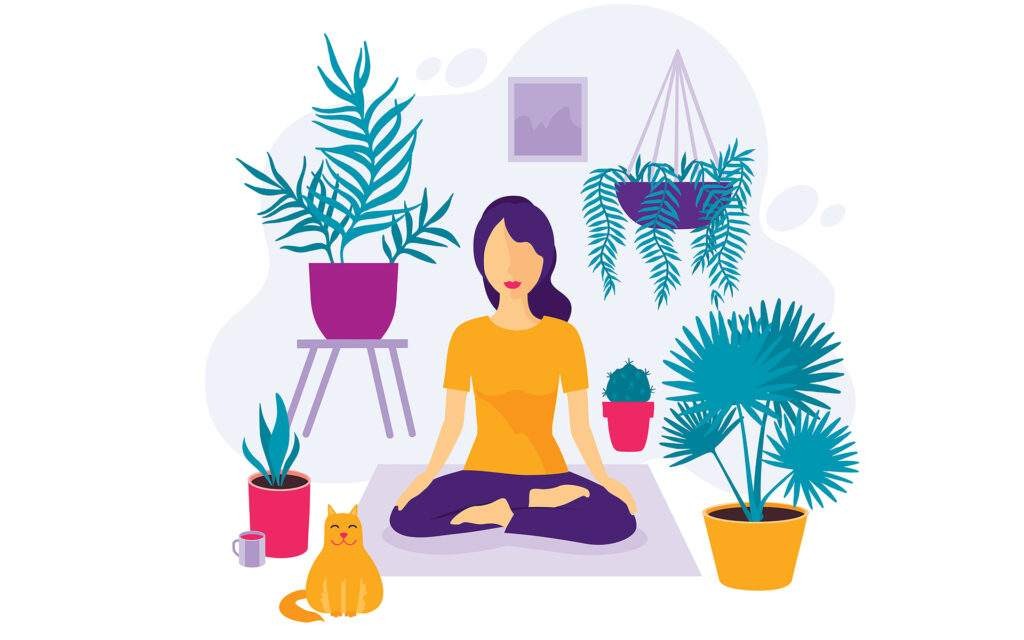Meditation offers a path to a calmer, more focused life. This beginner’s guide will explain the fundamentals of meditation and how to start practicing effectively. Explore the benefits, techniques, and tips for building a consistent meditation habit.
What is Meditation?
Meditation is a practice that trains your mind to focus, leading to a state of calm and clarity. It’s about cultivating mindfulness and awareness. We define meditation as a technique to concentrate and redirect your thoughts, often using your breath as an anchor.
In mindfulness meditation, you learn to pay attention to your breath as it comes in and out, noticing when your mind wanders. This practice of returning to your breath strengthens your attention and mindfulness.
The goal is to remain in the present moment, anchoring yourself in the “here and now” without judgment. This takes patience. As meditation teacher Sharon Salzberg notes, even experienced practitioners find their minds wandering quickly.
Why Learn How to Meditate?
Meditation provides space in your life for better choices. The most important tools you need are patience, kindness towards yourself, and a comfortable place to sit.
Here are ten benefits of incorporating meditation into your life:
- Understanding Your Pain: Meditation helps you become more aware of physical and emotional pain, allowing you to address it with greater clarity and compassion.
- Lower Your Stress: Regular practice reduces stress, promoting calmness and relaxation.
- Connect Better: Enhances mindfulness and empathy, improving relationships and communication.
- Improve Focus: Trains your mind to concentrate better, enhancing productivity.
- Reduce Brain Chatter: Quiets mental clutter, leading to a clearer mind.
- Enhance Emotional Health: Improves mood and promotes a balanced mindset.
- Increase Self-Awareness: Provides deeper insight into your thoughts, emotions, and behaviors.
- Promote Better Sleep: Relaxes the mind and body, making it easier to fall asleep.
- Boost Immunity: Strengthens your immune system, helping your body resist illness.
- Support Mental Resilience: Builds resilience to cope with challenges and setbacks.
How to Meditate: A Step-by-Step Guide for Beginners
Meditation is simpler (and harder) than you might think. Follow these steps, find a relaxing space, set a timer, and try it.
1. Take a Seat
Find a calm and quiet place to sit.
2. Set a Time Limit
Begin with a short time, such as five or ten minutes.
3. Notice Your Body
Sit in a chair with your feet on the floor, loosely cross-legged, or kneeling. Ensure you are stable and comfortable enough to stay in the position for a while.
4. Feel Your Breath
Follow the sensation of your breath as it goes in and out.
5. Notice When Your Mind Has Wandered
Your attention will inevitably wander. When you notice it has, gently return your attention to your breath.
6. Be Kind to Your Wandering Mind
Avoid judging yourself or obsessing over the thoughts you find yourself lost in. Just come back to your breath.
7. Close with Kindness
When you’re ready, gently lift your gaze (if your eyes are closed, open them). Take a moment to notice sounds in the environment, how your body feels, and your thoughts and emotions.
That’s it! That’s the practice. You focus your attention, your mind wanders, you bring it back, and you try to do it as kindly as possible.
How Much Should You Meditate?
Meditation is that simple and that challenging. Commit to sitting every day, even if it’s just for five minutes. As Sharon Salzberg says, the most important moment is when you sit down, signaling your belief in change and self-care.
Research suggests that just 12 minutes of meditation, 5 days a week, can improve your ability to pay attention.
Meditation Tips and Techniques
Besides basic breath meditation, other mindfulness techniques use different focal points, like sounds or spontaneous awareness. All these practices reveal how much our minds are running the show. Here are some helpful strategies:
How to Make Mindfulness a Habit
It’s estimated that 95% of our behavior runs on autopilot. Mindfulness is the opposite – it’s executive control rather than autopilot.
Here’s how to trigger yourself to be mindful: slow down the autopilot brain and remove obstacles in the path of the intentional brain.
- Put meditation reminders around you: Place your yoga mat or cushion in a visible spot.
- Refresh your reminders regularly: Use new sticky notes with varied and even funny messages.
- Create new patterns: Use “If this, then that” messages. For instance, “If office door, then deep breath.”
Basic Meditations for Beginners
The goal is mindfulness, not wiping your mind clear. Practice bringing your attention to your breath, then back to the breath when your attention wanders.
- Get comfortable and prepare to sit still for a few minutes.
- Focus on your breath. Where do you feel your breath most?
- Follow your breath for two minutes. Take a deep inhale, expanding your belly, and then exhale slowly.
If your mind wandered, you’ve made an important discovery: that’s the opposite of mindfulness. We “practice” mindfulness to recognize when our minds are doing their normal acrobatics, and choose what we’d like to focus on. Meditation helps us have a healthier relationship with ourselves and others.
Guided Meditations for Beginners
Guided meditations provide a focal point and gentle instruction. Try these:
- 1-Minute Meditation: A short practice for settling the mind.
- 10-Minute Meditation: Explores posture, breathing techniques, and working with thoughts and emotions.
- 15-Minute Meditation: Explores longer periods of formal meditation.
Other Styles of Mindfulness Meditation
Consider other forms like walking and lying down meditations.
Body Scan Meditation
Feel your feet on the ground. Scan over your whole body, bit by bit, up to the crown of your head. Check in with the physical feeling of being in your body without judgment.
Begin to focus your attention on different parts of your body – toes, feet, legs, etc. Linger for a few moments on each part. If your mind wanders, return your attention to the last body part you remember.
Walking Meditation
Integrate a mindful walking practice into your day.
Walk at a natural pace, placing your hands comfortably. Count steps up to 10, then start back at one. Pay attention to the lifting and falling of your foot, and the movement in your legs and body. Come back to the sensation of walking. Maintain a sense of the environment around you.
Loving-Kindness Meditation
Practice reminding yourself that you and others deserve happiness and ease.
Silently repeat phrases that reflect what you wish most deeply for yourself:
- May I live in safety.
- May I have mental happiness (peace, joy).
- May I have physical happiness (health, freedom from pain).
- May I live with ease.
Visualize yourself in a circle of those who have been kind to you. Experience yourself as the recipient of their love and attention.
Beyond the Beginning
When learning how to meditate, questions will arise.
- If I have an itch, can I scratch it? Yes, but try scratching it with your mind first.
- Should I breathe fast or slow? Breathe in whatever way feels comfortable.
- Should my eyes be open or closed? Try both. If open, gaze softly downward. If closed, don’t imagine anything in particular.
- Is it possible I just CANNOT meditate? Everyone wonders that. Notice it, and return your attention to the breath.
- Is it better to practice in a group or by myself? Both are great.
- What’s the best time of day to meditate? Whatever works for you.
- What if I get sexually aroused by thoughts in my head? No big deal. Release the thought, bring awareness to body sensations, and return to your breath.
- Any tips on integrating pets into meditation practice? Let it be if your pet enters the room. Try to avoid interrupting your session to interact with them.
- What do I think when meditating? Observe thoughts without attachment or judgment.
- How long should I meditate? 15-30 minutes is sufficient for most people.
- Should I listen to music while meditating? Some find it helpful, others prefer silence. Experiment to see what works best.
Conclusion
Meditation is a valuable skill for cultivating mindfulness, reducing stress, and improving overall well-being. By following this beginner’s guide and practicing regularly, you can learn to meditate correctly and experience its many benefits. Start today and discover the power of a calm, focused mind.

